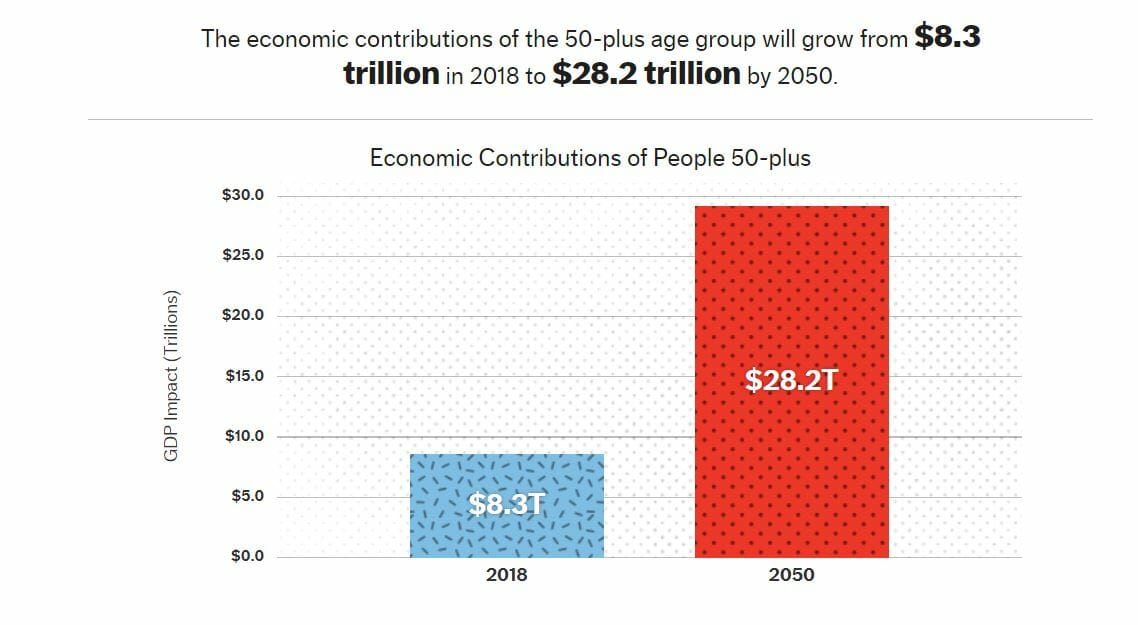A new AARP report shows how people age 50 or older are fueling economic growth, stimulating jobs and creating opportunities for people of all ages
As people live longer and healthier lives, they are contributing to communities and fueling economic growth well past the traditional retirement age. The economic and societal contribution of Americans age 50-plus was estimated to be worth almost $9 trillion in 2018 and is projected to grow, benefiting society and Americans of all ages.

Five insights from the AARP research you need to know:
- Economic contributions from older adults will grow over time, benefitting people of all ages and generations. The Longevity Economy outlook found that the 50-plus age cohort contributes $8.3 trillion to the U.S. economy each year, or 40% of the U.S. Gross Domestic Product (GDP). In 2030, when the first of the millennials are about to turn 50, the 50-plus age group will contribute $12.9 trillion to the U.S. economy. By 2050, when Gen Zers will be turning 50, the 50-plus age group will contribute $28.2 trillion to the U.S. economy. In terms of direct spending, 56 cents of every dollar spent in the U.S in 2018 was attributable to the 50-plus population and this share is set to increase to 61 cents by 2050.
- Societal contributions from older adults strengthen communities across the country. The Longevity Economy outlook found that people age 50-plus contributed $745 billion worth of unpaid activities such as volunteering and caregiving across the country. In addition, people age 50-plus made $97 billion in charitable contributions in 2018. They spent $135 billion on educational services, including for their children and grandchildren, and contributed $4 billion to educational institutions across the U.S.
- The 50-plus age demographic has a major impact on taxes. The Longevity Economy outlook found that in 2018, the 50-plus age demographic contributed $2.1 trillion in tax revenue, made up of $1.4 trillion in federal taxes and $645 billion in state and local taxes. That figure will increase four times by 2050. This tax revenue includes both amounts directly paid by people 50-plus and the ripple effects of all their economic activities.
- The 50-plus age group will be a critical driver of job sustainability in the U.S. through 2050. The Longevity Economy outlook found that in 2018, people age 50 and older supported 88.6 million jobs in the U.S., through jobs they hold or create, directly or indirectly. This is projected to grow to 102.8 million jobs in 2050.
- However, age discrimination against Americans age 50-plus cost the U.S. economy $850 billion in 2018. The Economic Impact of Age Discrimination, the latest report in the Longevity Economy outlook series, found that the potential economic contribution of the 50-plus age cohort could increase by $3.9 trillion annually in a no-age bias economy, which would mean a contribution of $32.1 trillion to GDP by 2050.
Read the full report HERE
